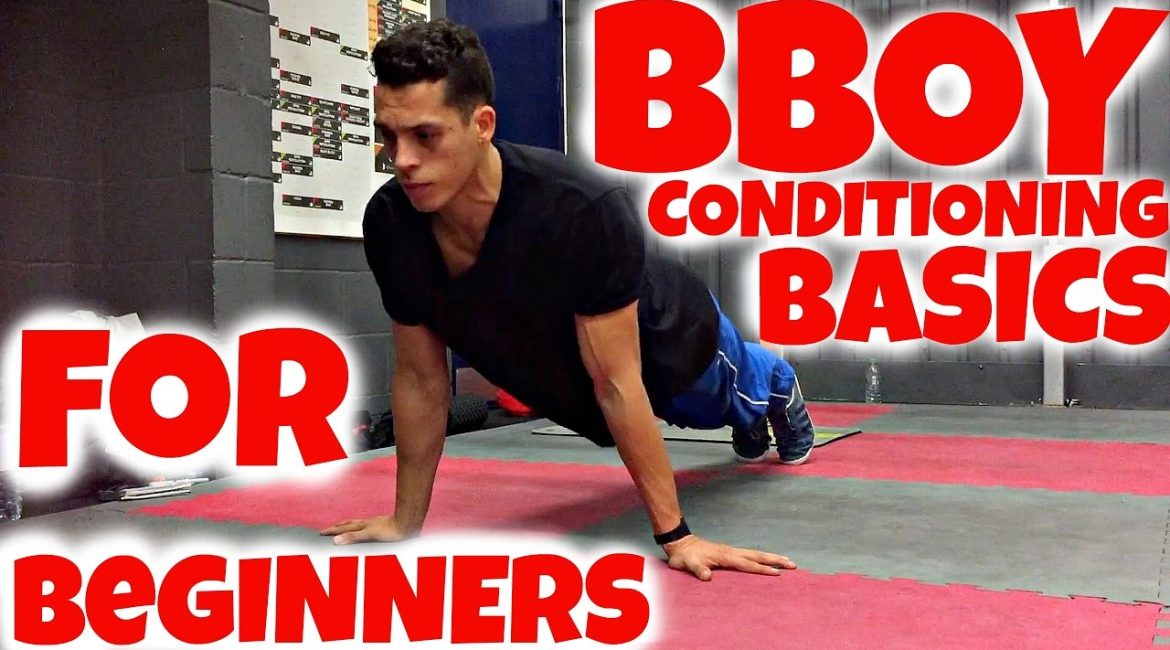Breakdance, or Bboying, is a dynamic and explosive form of dance that demands a high level of strength, stamina, and flexibility. For beginners looking to dive into the world of breakdancing, building a solid foundation of physical conditioning is essential. This blog post explores key exercises designed to strengthen the body and improve the essential techniques required in breakdancing. We will cover everything from basic positions to more advanced conditioning exercises that will help you build the physical prowess needed to excel in this artistic sport.
Position Zero (1:02)
Position Zero is your starting block in breakdancing. It’s the fundamental stance from which many moves originate. To get into Position Zero, balance on the balls of your feet with your heels off the ground, thighs parallel to the floor, and your weight centered. From a side view, ensure your hips are aligned with your heels. This posture not only prepares you for more complex moves but also helps in strengthening the legs and core due to the balance required. Practice holding this position for at least 30 seconds, repeating five times with short breaks in between to build endurance and familiarity.
Transferring Your Weight Using Your Inner Knuckles (1:36)
A unique aspect of breakdancing is the use of the hands not just for support, but as pivotal points for weight transfer and balance. Learning to use the inner knuckles of your hands helps in distributing your body weight more effectively. Start by ensuring your hands have the flexibility required by pressing your fingers, thumbs, and knuckles together while keeping an arch where your hand meets the floor. Practice shifting your weight gently onto these points and lift your knees off the floor. This technique will enhance your hand strength and control, critical for executing intricate footwork and freezes.
Single Leg Shoot Outs (2:09)
Single Leg Shoot Outs are excellent for building leg strength and control, crucial for quick and precise movements in breakdancing. Begin in a squat position and shoot one leg out to the side while maintaining balance and control with the stationary leg. This exercise helps develop the ability to execute moves that require sudden leg extensions, common in many breakdancing routines. Regular practice will also improve your overall balance and agility.
Position Three (3:15)
Position Three is often used in the six-step, a foundational breakdancing routine. To master this position, ensure it is strong and balanced. Lean slightly over your arms, keep your knees bent, and use your inner knuckles to bear some weight. This position enhances your ability to be quicker and more fluid in your footwork, as the weight distribution allows for lighter and faster movements.
How to Push Up Correctly (3:33)
Push-ups are a staple in breakdancing conditioning due to their effectiveness in building upper body strength. When doing push-ups, focus on quality over quantity. Engage your core, glutes, and quads to maintain a straight line from your head to your feet. Ensure that your hand placement is correct and that your elbows point towards your hips rather than out to the sides to avoid shoulder strain. This correct form is essential to prevent injuries and build the upper body strength required for various breakdancing moves.
4 Favorite Push-Up Hand Placements for Breakin’ Strength (4:21)
Different hand placements in push-ups can target various muscle groups more effectively, which is beneficial in breakdancing. Experiment with these variations:
- Standard: Ideal for overall strength.
- Wide Grip: Focuses on the chest and shoulders.
- Diamond: Targets the triceps.
- Pseudo Planche: Greatly improves wrist strength and balance.
How to Plank Properly (5:33)
Planking is another fundamental exercise for building core stability. The key to a proper plank is maintaining a straight line from your head to your heels. Engage your core by drawing your belly button into your spine, squeeze your glutes, and ensure your elbows are directly under your shoulders if on your forearms. This form helps develop the endurance and core strength necessary for maintaining complex positions and executing power moves in breakdancing.
19 Variations Of Plank (6:15)
Once you’ve mastered the basic plank, challenge yourself with these variations to further strengthen your core and enhance your ability to move dynamically:
- Arm Lift
- Leg Lift
- Side Plank
- Side Plank with Leg Lift
- Spiderman Plank
- Rocking Plank
- Reverse Plank
- Plank Jacks
- Knee to Elbow
- Supine Plank
- One-arm Plank
- Thread the Needle Plank
- Plank with Arm Extension
- Plank with Opposite Arm and Leg Lift
- Mountain Climbers
- Plank to Squat
- Plank Rolls
- Hip Dip Plank
- Walking Plank
Advanced level? Try my 5-minute plank Challenge! (6:15)
For those who are more advanced and looking for an extra challenge, try the 5-minute plank challenge. Pick five of the plank variations listed above and perform each back-to-back without letting your knees touch the ground, holding each for one minute. This intense workout will not only boost your core strength but also your endurance and mental toughness.
By incorporating these exercises into your regular training routine, you will build the strength, flexibility, and control needed to excel in breakdancing. Remember, consistency is key, so keep practicing and pushing your limits. Happy breaking!


Leave a reply